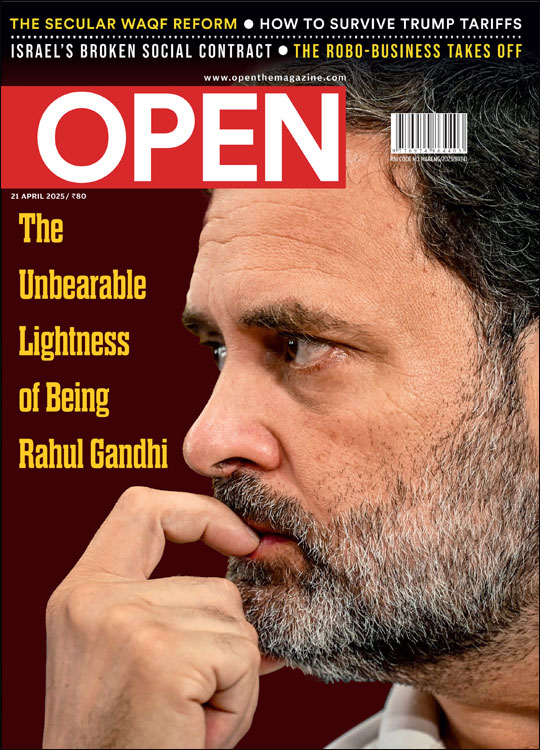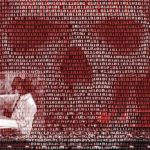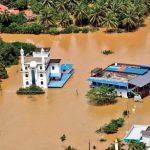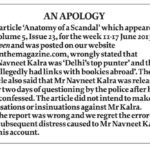Love in the Time of Caste Politics
For Divya and Ilavarasan, eloping meant sparking off forces beyond their imagination
 Shahina KK
Shahina KK
 Shahina KK
|
26 Jun, 2013
Shahina KK
|
26 Jun, 2013
/wp-content/uploads/2015/11/love-caste.jpg)
For Divya and Ilavarasan, eloping meant sparking off forces beyond their imagination
There was nothing extraordinary about their romance in the beginning. The boy’s name was Ilavarasan, the girl’s Divya. Both were from Vellalappatti Panchayat in Tamil Nadu’s Dharmapuri district. Ilavarasan was pursuing a degree in Computer Science and Divya was in her final year as a BSc Nursing student. They travelled by the same bus to college and, as often happens, fell in love. They anticipated resistance. She belonged to the Vanniyar community, a caste officially categorised under Most Backward Classes. Ilavarasan was a Dalit, an Adi Dravida. The couple eloped and got married last year. After some time they returned to the boy’s parents. A few days later, the girl’s mother, Thenmozhi, accompanied by relatives, came to the house. They pleaded with Divya to break up the marriage. She refused. That same afternoon, her father, Nagarajan, committed suicide.
Carnage followed in Naikkankottai, Ilavarasan’s village. Media reports say that immediately after Nagarajan’s death, a group of 200 Vanniyar men gathered there. They blocked roads and pelted stones at vehicles. The crowd then suddenly swelled to around 1,000. They forced Dalits out of their homes. Sixty houses were razed, over 250 looted and damaged. No lives were lost but three Dalit colonies—Natham, Anna Nagar and Konampatti—were burned down.
In most homes, assets like motorbikes, cycles, refrigerators, television sets and almirahs were destroyed. A fact-finding team headed by Mumbai-based writer and civil rights activist Dr Anand Teltumbde found that this was organised mayhem. Their report said the marriage was just a pretext. The violence was designed and executed by the political party Pattali Makkal Katchi (PMK) to strengthen its base within the Vanniyar community.
The couple, both 21 years old, went into hiding, running from one place to another. Seven months later, Divya appeared at Chennai High Court and submitted that she had chosen to return to her mother. On 1 July, she has to tell the court whether her decision is final or not. That is when the stamp of defeat will finally be put on this love story.
This is the context in which I went to Dharmapuri. The district, in the north western corner of Tamil Nadu, has a history of caste conflict. According to a study done by Evidence, an NGO in Madurai working for Dalit rights, there have been 18 incidents of violence against Dalits in the district since 1995.
I called up Ilavarasan before setting off. He spoke in a frightened whisper, agreeing to meet me. Divya’s lawyer had already said she was under terrible stress and would not see journalists. Once I reached Dharmapuri, Ilavarasan stopped picking up my calls. Laxmi, a Dalit activist in Dharmapuri who had helped me make contact with Ilavarasan, said he had fled to a neighboring state. I had his father Ilangovan’s number. He told me that his son was not in town and that the situation remained volatile. He agreed to meet me after repeated requests. I was told to take an autorickshaw to a particular point in town and from there, to walk to his address.
It was a tiny two-bedroom rented flat on the first floor of a building. Ilangovon, an employee in a government hospital, and his wife Krishnaveni looked hapless. They too had practically been in hiding. He welcomed me, saying I was the first visitor to that home. They had come here after their residence at Natham Colony was set ablaze. The flat was also occupied by Divya and Ilavarasan for a few days after their marriage.
Like most fathers, Ilangovan had had no clue that his son was in a relationship. “He went missing one day. He had just completed the physical fitness test to join the Tamil Nadu police force and was waiting for his appointment,” he says. Ilangovan filed a missing person’s complaint with the police. After a few days, he got a call from his son. “He said that he had got married. He cried and apologised. He told me they had been in love for two years. He said Divya’s parents had arranged another alliance for her and she would have committed suicide if he had not married her. What can we do in such a situation? I could not throw the children to the street. We asked him to come over with the girl,” he says.
After they returned, Ilavarasan went to the Deputy Inspector General of Police to tell him that he was not missing. The DIG referred him to the Superintendent of Police, Dharmapuri, who informed Divya’s parents about the marriage. “I came to know that her father Nagarajan refused to come to the police station, saying his daughter was dead. The cops told us that whatever was done was done and advised Ilavarasan to focus on his career,” says Ilangovan.
The marriage was solemnised in a nearby temple. After some days, a group of people came to visit them. Among them were Divya’s mother, aunt and community leaders from both sides. The Vanniyars demanded that the marriage be broken up. They wanted Divya to go with them. She was adamant about remaining with her husband. Hours later, Nagarajan was found hanging from the neck in his home.
Police say the rampage started immediately after the body was discovered. A group of Vanniyars started pillaging Dalit localities in the village. In the days that followed, the police charged cases against 300 Vanniyar youths. Half of them were arrested.
Ilavarasan, his parents and Divya had to run away from Dharmapuri. Their relatives were not well off and no one could host them for too long, so they kept shifting. “We stayed at a relative’s place in Chennai for a few days. Then we shifted to Bangalore, then Chittur [Andhra Pradesh],” says Ilangovan. It was only three months ago that they managed to rent this house.
Divya was saddened by her father’s demise, but was otherwise content, says Ilangovan. “She was not very expressive, [but] we knew she was under tremendous strain. We tried to keep her happy,” he says. “We bought a carrom board, chess board and laptop [he meant a tablet] thinking that it would help her to pass time and overcome the distress.”
On 1 May, Divya’s mother, Thenmozhi, came to their home again, this time with two sarees and sweets for her daughter.
Ilavarasan brought her on his bike. Thenmozhi was there for a reason; she needed Divya’s signature on a document. Nagarajan had been a junior clerk in a cooperative society. According to a scheme, his dependent was eligible for a job there. As the eldest daughter, Divya had to certify that she had no objection to the job going to her younger brother. “She spent more than an hour here. She was very nice to us. She asked us to take good care of her daughter. I had the feeling that she had almost accepted Divya’s marriage,” says Krishnaveni.
Divya, she says, was a good daughter-in-law, willing to help with household duties. “I wanted her to take her own time to overcome her trauma. I am sure that her mother also had no problem with us,” says Krishnaveni.
On 4 June, Ilavarasan, accompanied by his brother Balaji, went to his college to collect his transfer certificate because the college authorities had said that he could not study there any longer. Ilangovan was in office and Krishnaveni went to meet one of her son’s teachers to ask for help so that Ilavarasan could at least write the examination. When she returned, Divya was missing. The door had been left open. Her clothes and other belongings were there but not her sandals. When Ilavarasan came back, he said that Divya had called him to say she was going to visit her mother who was unwell and admitted to a hospital. Divya never returned.
Krishnaveni and Ilangovan can find only one reason for this. “She might have been forced by her mother and relatives. Divya was not able to resist the pressure. She used to talk to her mother for almost an hour everyday on the phone,” says Krishnaveni.
I interviewed Ilavarasan over the phone. When Divya told him she was going to meet her mother, he asked her to wait so that he could accompany her. After a few minutes, she called again to say that she was on her way to the hospital. After that, Divya stopped taking Ilavarasan’s calls. “Her mother took my call after some time. She told me that Divya did not want to come back or meet me. They switched their phones off after that,” he says.
Ilavarasan believes all of them—Divya, her mother and his parents—are victims of a political conspiracy. “Even though there was the anguish about her father’s death, she was happy with me,” he says.
Caste-based violence is not new to Dharmapuri. Vanniyar attacks on Dalits have been a regular phenomenon there since the ’90s. Scholars like MSS Pandian view this as an expression of the weakening power of Vanniyars over Dalits. In Nayakkankottai village, most Dalits have better living standards than the Vanniyars. Many Dalit youths have managed to get higher education and employment in cities like Bangalore and Coimbatore. The organising of the Vanniyars into a political group began late in Tamil Nadu, as compared to communities like the Thevars. The Vanniyar Sangam was formed in 1980 by Dr S Ramdoss. Since its inception, there has been a series of clashes between Dalits and Vanniyars. The Sangam later metamorphosed into the PMK, a political party driven primarily by caste hate. Ramdoss tried to bring all intermediate castes under a single umbrella against Dalits, but by the late 90s, the PMK started becoming irrelevant in Tamil Nadu politics. The violence following Divya and Ilavarasan’s marriage is thought to be PMK’s attempt to regain its waning base among Vanniyars. Resisting inter-caste marriages is right at the top of PMK’s agenda. Two months before this issue erupted, Kaduvetti Guru, a PMK MLA who heads the Vanniyar Sangam, publicly announced that Dalits marrying Vanniyar girls deserve to be hacked to death.
Caste was inconsequential for Ilavarasan and Divya. “Caste has nothing to do with our lives. It has never been a problem between us. We had discussed the possible consequences of an inter-caste marriage since the very beginning of our relationship. But even in our worst dreams, we did not expect such a brutal exploitation of our situation by caste organisations and political parties,” says Ilavarasan.
He still believes Divya loves him. He does not blame her mother either, saying she’s a helpless woman. “They are scared of their community leaders and local PMK politicians. Both of them are in their custody,” he says. Ilavarasan has no respect for Dalit organisations either. “I have not approached any for help and they have not offered either. Nobody helped us when we were running from one place to another in search of shelter. Everybody is only interested in using this issue for their benefit,” he says.
I met Divya’s mother Thenmozhi after several rounds of discussions with the local PMK leaders. Saravanan A, the party’s district assistant general secretary, agreed to bring her to a fruit stall near my hotel. Beside him, her 16-year-old son also accompanied Thenmozhi. A woman in her early 40s, she looked fatigued. We sat down, and after a formal introduction she told me she had not forced Divya to break up her marriage. She was, in fact, beginning to accept it. “But Divya was shattered after my husband committed suicide. We used to talk on the phone frequently. She used to cry saying that she was responsible for her father’s death. She was burning with guilt, but I did not blame her. I could do nothing but cry,” she said.
Thenmozhi says Divya broke up the marriage for the sake of their families. They were living as if in prison because both of them could not appear in public. “I discouraged my daughter from breaking up the marriage. I was scared that the people in my community would kill her. Over the last two months, Divya expressed her wish to come back a couple of times. I did not have the courage to accept her. On 4 June, she herself took the decision to wind up her marriage,” she says.
I asked her about the reason for her husband’s suicide. She remained silent and instead Saravanan launched into a political pitch. “Dalits are responsible. Nagarajan had been mentally tortured by a policeman of their community. He was threatened with a case if he opposed the marriage. Besides, the local leaders of Viduthalai Chiruthaigal Katchi (VCK, a political party with a Dalit base) took Rs 5 lakh from him, promising to get his daughter back.” VCK leaders say these allegations are just PMK’s attempts to tarnish Dalits.
T Senthil Kumar, a Times of India correspondent and native of Dharmapuri, says Nagarajan was intimidated by the Vanniyar Sangam. “There was a panchayat meeting on 4 November [at] which hundreds of Vanniyars gathered. They aggressively demanded that the girl must return. I don’t think the Dalits in the locality are responsible for Nagarajan’s death,” says Senthil.
Thenmozhi neither agreed with nor opposed Saravanan’s story. She seemed unable to speak freely in front of him. In what she did say, what was most striking was her absence of ill-will towards Ilavarasan and his family. She refused to say anything negative about him. She just blamed their society and its deep-rooted caste divisions.
She says there was no untruth in the story of her being in hospital the day Divya left her husband. “She hugged me and said that she wanted to nurse me. I did not know what to do and where to go with my daughter. I did not have the courage to go back to my village. We went to a relative’s place in Dharmapuri town and stayed there for a day. The next day we went to Chennai and presented ourselves before the court.”
She had earlier filed a habeas corpus petition for Divya and its hearing was due. On 13 June, Divya told the court that she did not want to go back to Ilavarasan. The court has now given another date, 1 July, for a final decision.
The media have not been able to reach Divya. Local journalists assume that she is in the PMK’s custody.
Ilavarasan is confident that she will change her mind and come back. Thenmozhi gave no hint of what Divya would tell the court on 1 July. She could yield to her community’s pressures or return to Ilavarasan. It’s not a choice any girl should have to face.
About The Author
CURRENT ISSUE
The Unbearable Lightness of Being Rahul Gandhi
MOst Popular
3

/wp-content/uploads/2025/04/Cover-Congress.jpg)











More Columns
Maoist eco-system pitch for talks a false flag Siddharth Singh
AI powered deep fakes pose major cyber threat Rajeev Deshpande
Mario Vargas Llosa, the colossus of the Latin American novel Ullekh NP